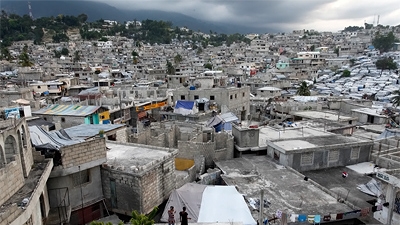Haiti is a country at risk. Extreme poverty, severe deforestation and soil erosion, and poor building practices contribute to 96 percent of its population living in jeopardy. The weather also takes a heavy toll. Over the past decade, 17 hurricanes have killed more than 3,600 people and affected 800,000 others. In 2008 alone, losses and damages resulting from tropical cyclones Fay, Gustav, Hanna, and Ike were around 15 percent of GDP.
Increasing tropical storm severity and incidences of drought, along with a growing population (an estimated 16 million inhabitants by 2030), have led Haiti to take a strong stance on climate change resilience. On May 1, the Climate Investment Funds (CIF) stood with the island nation by endorsing $25 million for Haiti’s strategic program for climate resilience under the Pilot Program for Climate Resilience (PPCR).
“Resilience is not about accepting the caprices of Mother Nature. Rather, it is about managing our natural environment in a responsible manner, in the quest for a better future, for the sake of all of us,” Haiti President Joseph Michel Martelly said in a video address to the PPPCR Sub-Committee meeting.
“In the process of elaborating Haiti’s strategic plan for resilience to climate change, we have gotten closer to our Caribbean neighbors and other people of the world. We are fully committed to the principles of resilience,” Martelly continued.
A delegation led by Thomas Jacques, Minister of Agriculture, Natural Resources and Rural Development, presented Haiti’s strategic program, which aims to support efforts on climate-proofing infrastructure and agriculture in the vulnerable Centre-Artibonite Loop, strengthening resilience in coastal cities of the Gulf of La Gonâve, and advancing knowledge management and capacity building in hydro-meteorological and climate services. The Inter-American Development Bank and the World Bank are working together to help Haiti develop and implement this strategic program.
According to Rose May Guignard of the Comite Interministeriel d’Amenagement du Territoire (CIAT), the government agency overseeing Haiti’s strategic long-term land use planning, this program was built upon Haiti’s National Adaptation Program for Action (NAPA) with a focus on long-lasting post-disaster recovery. It reflects a balance between urban and rural, and aims to pilot projects in an extremely vulnerable area and one in which benefits can be demonstrated for broader national resilience. It is also designed to seek complementarities with existing and future larger investment projects and World Bank operations in Haiti.


